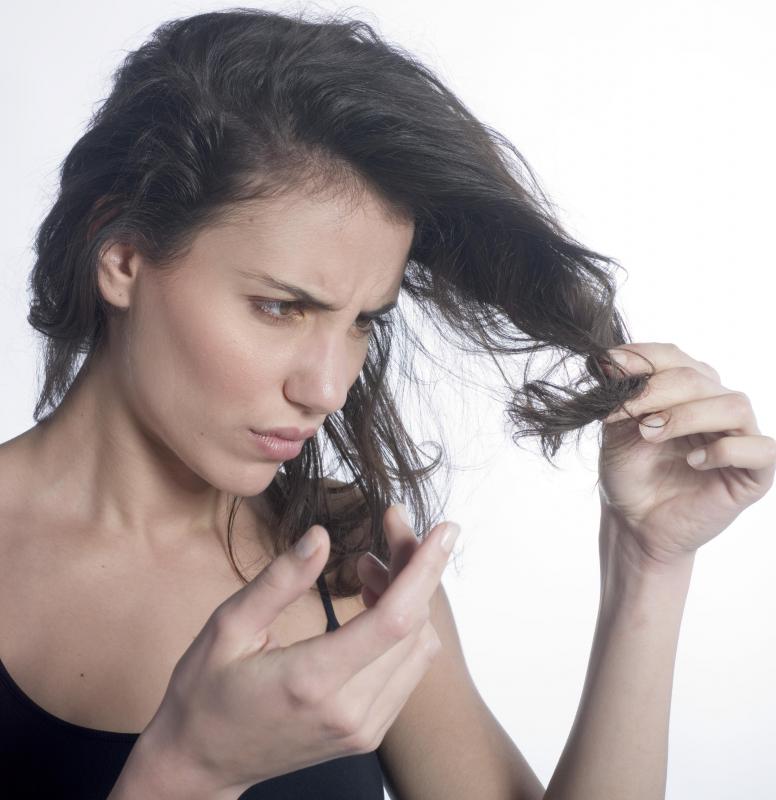At BeautyAnswered, we're committed to delivering accurate, trustworthy information. Our expert-authored content is rigorously fact-checked and sourced from credible authorities. Discover how we uphold the highest standards in providing you with reliable knowledge.
What is a Hair Cuticle?
Cuticle is not limited to just nails; mammalian hair also contains cuticle. Hair cuticle makes up the outside layers of hair. It forms scaly, protective layers to shield the inner parts of each hair strand.
Hair cuticle is hard and transparent. Each individual cuticle overlaps another like shingles, stretching toward the end lengths of each piece of hair. Dead cells, which form scales, form the cuticle. Aside from protecting the inner layers of the hair, the cuticle also controls how much water can enter the hair. The shiny luster found on the hair of many people can be attributed to their hair cuticle cells.

The structure of hair cuticle cells can vary. Some cells are elongate, oval-shaped, or flattened. Others may have tapered ends. This variance allows for the maximum coverage of the other parts of hair, ensuring the best protection against injury or harm.
Though it may seem too tiny for additional parts, the structure of hair is made up of two more layers beneath the cuticle. Directly beneath the protective layer is the cortex. This middle, or inner layer, gives hair its elasticity. It also provides strength for the hair to maintain its shape. Hair pigmentation is found within this cortex, giving each person his or her hair color. Fibrous in texture, the cortex is formed from elongated cells.

The medulla, the next layer of hair, is formed from round cells. This innermost layer is also called the marrow or pith of the hair. People with very fine hair may not have a medulla in their strands of hair. Both the medulla and cortex are very soft.
When hair is chemically treated, the cuticle can become altered. Hair color, chemical relaxers, and permanent solutions can raise the scales of the hair cuticle in order to enter the cortex. This allows the cortex color to be altered. It can also result in damaged cuticles.
Damage to hair health can occur in other ways, as well. Heat, such as that from frequent curling iron use, can break the cuticle. Constant brushing can do this as well. Wind, sun, and other elemental forces may also result in hair cuticle damage.

While this damage can result in loss of hair protection, it can also create a dull appearance. Damaged hair can also be stringy or brittle, causing it to be easily broken. Damaged hair cuticle is treatable in many cases. Eating a diet full of fruits and vegetables, taking hair vitamins, and generally taking care of hair can ensure healthy cuticles.

For optimal hair cuticle care, hair should not be pulled or tightly bound. Combing should be completely gently, and accessories should not cause strain. Hair should not be washed daily, though it should be treated with cuticle repair serum or conditioner if necessary.
AS FEATURED ON:
AS FEATURED ON:















Discussion Comments
I just found out that the protein packs I've been using regularly (once a week) have been doing more harm than good.
I didn't know it, but overuse of protein on human hair causes a breakdown in the cuticle, leading to thinning and splitting.
So for anyone who uses protein packs, use them only once a month.
Can damage to the hair cuticle be reversed with hair treatments, or is that just beauty industry hype?
So, if I wanted to do a science project on hair-specifically split ends, what would you recommend information or idea wise?
Post your comments